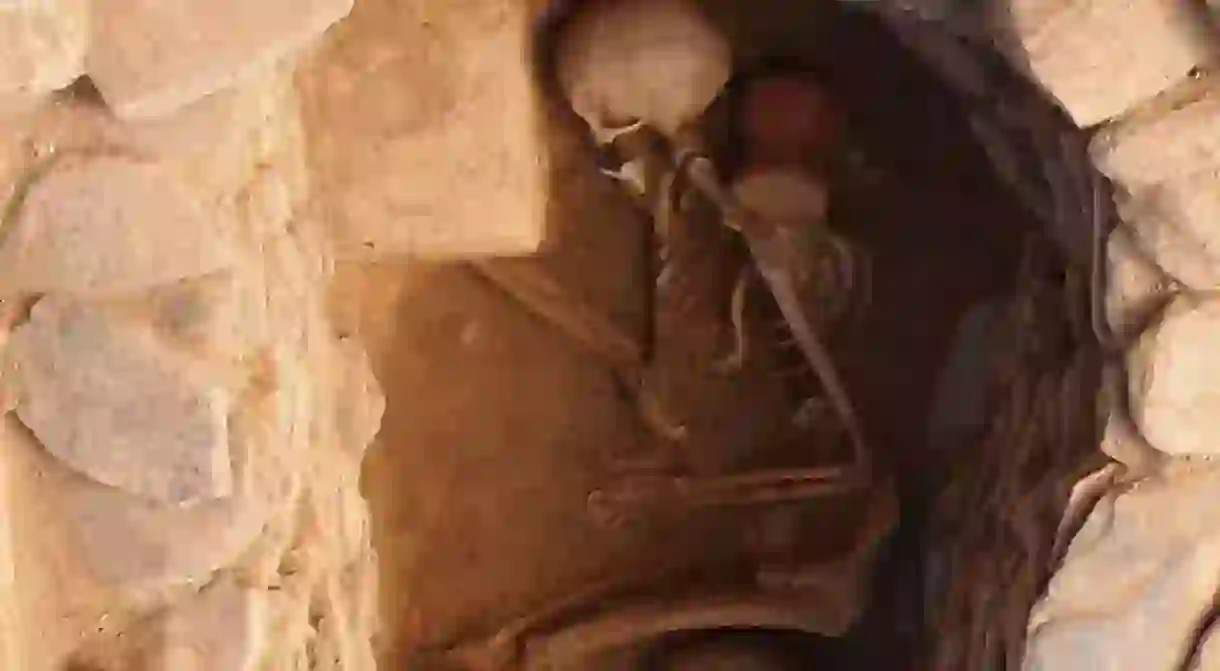This Grave Reveals Peru's Dark History

Archaeologists have unturned some unusual remains at the top of an ancient pyramid in Lima which date back to the 19th century, revealing a peek into Peru’s dark history.
In Lima, the capital of Peru, archaeologists have made an unlikely discovery at the top of a pyramid built thousands of years ago. The bodies of 16 Chinese laborers who died here around the late 19th century have been uncovered.
These remains offer a lesser known glimpse into Peru’s dark history. Of the 16 bodies uncovered, eleven were wrapped in simple cloth shrouds; the remaining five were laid to rest in wooden coffins and wore blue-green jackets, Reuters reports.

Until the late 19th century, only a small number of Asian people were said to have made it to South America by boarding ships that stopped in Macau and other Asian cities.
However, the largest migration of Chinese people to Peru began in the late 1840s, with the decline of slave labour. Slave labour was abolished in Peru in 1854. However, despite this, the landowners of Peru still wanted cheap labour for their sugar and cotton plantations. The government introduced a scheme whereby former slaveholders could bring new indentured laborers to the country.
Many of those new workers came from China, where political unrest had created a population of displaced people in need of work. Between 1849 and 1874 around 100,000 Chinese contract laborers, mostly from the province of Guangdong, sailed to Peru under restrictive labour contracts that tied them to land owners for years.
The recent Chinese bodies uncovered at the Bellavista pyramid in Lima had likely picked cotton at a nearby plantation in very difficult conditions, and most likely buried in the late 1800s and early 1900s.

The work conditions for Chinese labourers were harsh, and they were often treated little better than slaves had been, many even died because of the poor conditions. Even as work conditions improved for labourers, the Chinese were marginalised and required to keep papers proving they were free and to register with the government.
The bodies discovered on the Lima pyramid were found buried at the top of an adobe pyramid first used by the ancient Ichma people. The remains reflect both the improving conditions for Chinese laborers and their exclusion from parts of Peruvian society.
As their economic conditions improved, Chinese families were able to afford more than simple shrouds for their dead loved ones. However, according to Peru’s Culture Ministry, Chinese labourers in the 20th century were generally not allowed to be buried at Lima’s Catholic cemeteries, forcing them to improvise burial sites.

Remains of other Chinese labourers have previously been uncovered at other ancient pyramids in Lima known as “huacas.” These “huacas” are thought to have been built by indigenous societies that once ruled much of Peru’s Pacific coast; the pyramids were where members of the elite were often buried with gold objects, ceramics or human sacrifices. Archaeologists believe that the huacas had a sacred association that might have made them attractive places for burial by Chinese labourers.
As conditions back in China began to improve around the 1880’s, the Chinese government started to restrict the flow of labour out of the country, thus reducing the number of Chinese labourers in Peru. However, even to this day, the influence of those Chinese migrants has shaped Peru. Currently, 15 percent of people in Peru can trace their ancestry back to Chinese and other Asian migrants from the 19th century.













